Our previous article presented the Airco DH.4, the fourth aircraft featured in the recently released WW1 Wings of Glory Airplane Packs. Now let’s learn something more about the three versions presented in Wings of Glory.
50th Squadron AEF
The Airco DH.4 powered by the American Liberty 12-cylinder engine was the US Army Air Service standard general purpose two-seater in WW1, utilized for bombing, reconnaissance, and artillery spotting by the AEF – American Expeditionary Forces. One of the units equipped with these aircraft was the 50th Aero Squadron, known as the Dutch Girl Squadron for the insignia painted on the aircraft and the pins above the right breast pocket on the squadron members' uniforms. It was borrowed from the label of a kitchen cleanser popular that time to represent the motto “Clean up on Germany.”
The 50th Squadron entered service at St. Maixent Aerodrome on 17 July 1918. After receiving additional personnel, supplies, and equipment, it moved to the combat flying school at Amanty Airdrome, where it received the American-built DH-4. After training on the DH-4s, the unit was designated as a Corps Observation squadron and assigned to the I Corps Observation Group, for general surveillance of the enemy rear areas by means of both visual and photographic reconnaissance.
The purpose of the 50th Squadron missions was intelligence-gathering and informing First Army headquarters about enemy movements, including preparations for infantry attacks or retreats. The first combat mission was on 12 September, in support of the 82d and 90th Infantry Divisions, as part of the St. Mihiel Offensive. The unit flew two artillery surveillance flights to help adjust the artillery barrage on enemy forces for the 90th Division, and six reconnaissance missions, observing and photographing enemy forces in the rear areas and reporting that information to the 82d Division Commander.
The 50th Squadron earned the reputation for heroism supporting the Meuse-Argonne offensive. By flying contact patrols and keeping constant communication with ground squadrons, it provided vital intelligence for the offensive. The most notable mission flown in the DH-4 was performed by the 50th Squadron in early October, when the 50th Aero Squadron was detached to find and assist the famed “Lost Battalion” - units of the 308th Infantry Regiment, cut off and surrounded by German troops.
During the efforts to locate and resupply this battalion-sized force by air with ammunition, rations, and medical supplies, 1st Lt. Harold Goettler and 2nd Lt. Erwin Bleckley had their DH.4 brought down by ground fire and died. They were awarded the Distinguished Service Cross and later with the Medal of Honor.
In last October, the 50th Squadron was moved from Remicourt to the Clermont-en-Argone and continued combat operations until the 11 November Armistice with Germany.
Charles Bartlett & Walter Naylor
Born in January 1889 at Weston-Super-Mare, in Somerset, Charles Bartlett was a bomber ace with eight victories credited from July 1917 to March 1918, all of them flying the Airco DH.4 with the 5N Squadron. He scored seven with Air Mechanic First Class (originally, Gunlayer) Walter Naylor. Bartlett enlisted in the Royal Navy Air Service (RNAS) in 1916 and got his Royal Aero Club Aviator's Certificate in June that year.
In September 1917, he was awarded the Distinguished Service Cross for his “exceptionally good work on the occasion of a bombing raid on Houttave Aerodome on 25 July, 1917”. In May 1918, a bar was added to his DSC as recognition of his bravery and devotion to duty in bombing raids and attacking enemy aircraft.
By that time, he had performed many bombing raids and brought down 4 Albatros D.Vs and 4 Fokker Dr.Is. His great skill and determination was illustrated in the supplement to the London Gazzette of 17 May 1918, describing the action when he scored his 8th victory:
“On 28 March, 1918, he carried out three bombing raids. Whilst returning from one of these missions he was attacked at a height of about 2,500 feet by three enemy triplanes, and five other scouts. One of these he drove down, attacking it with his front guns, whilst his observer shot down out of control a second. Observing that two of the triplanes were diving on him and converging, he side-slipped his machine away with the result that the two enemy machines collided and fell to the ground together, where they burst into flames.”
In July 1918, after the RNAS had been merged into the Royal Air Force, Lieutenant Bartlett, already serving as a temporary captain, was promoted to temporary Major. He continued in RAF service after World War I, even though he often struggled with health problems. He retired in August 1932 as a Squadron Leader. He died in 1986.
Walter Naylor was the leading observer ace of the RNAS, with 14 accredited victories. The first one was scored on 21 October 1917, as he and his pilot, Flight Lieutenant A. Shaw, drove down a German Albatros D.V out of control over Houttave Airfield.
Naylor scored his 5th victory and became an ace on 19 December 1917, flying with Bartlett. They destroyed an Albatros D.V offshore of Ostende. Together, they scored another six victories, including the two Fokker Dr.Is and a Pfalz D.III destroyed on 28 March 1918. Naylor was awarded the Distinguished Service Medal on 17 April 1918, with a Bar, in lieu of a second award, following on June 1918.
Frederick Cotton & Eric Betts
Frederick Sidney Cotton was born on 17 June 1894 in Queensland, Australia. He went to England in November 1915 to join the Royal Naval Air Service, and after only five hours solo flying, he qualified as a combat pilot. But more than a pilot, Cotton was an inventor. IN 1917, after participating in night bombing sorties over France and Germany, his experience with high level, low-temperature flying led him to develop the revolutionary new "Sidcot" suit. This flying suit solved the problem of keeping pilots warm in the cockpit and was widely used by the RAF until the 1950s.
He was promoted to Flight Sub-Lieutenant in June 1917, in the No. 8 Squadron RNAS, but soon thereafter he came into conflict with senior officers, and resigned his commission in October 1917. Cotton went on flying and was an aviation and photography pionner. He was largely responsible for the development of photographic reconnaissance before and during the Second World War, and was also responsible for developing and promoting an early colour film process.
On the eve of WW2, Cotton's flying expertise and connections enabled him to carry out clandestine photographic reconnaissance over Germany, which provided valuable information about naval activity and troop build-ups. He was appointed honorary Wing Commander on 22 September 1939, and was engaged in important reconnaissance missions. Afterward, he was asked to take charge of a special photographic development unit, which provided important intelligence leading to successful air raids on key enemy installations. But by mid 1940, Cotton had clashed with senior officials in the Air Ministry and resigned his commission. He was, however, awarded an OBE for his work, and for the rest of the war he acted as an unofficial consultant to the Admiralty.
After the war, Cotton continued his airborne adventures, airlifting arms and supplies to Hyderabad in India during the 1948 hostilities. For this he was accused of gun-running and fined 200 pounds. His life story was recorded in the book he wrote with Ralph Barker shortly before his death, Aviator extraordinary: the Sidney Cotton story. He died on 13 February, 1969.
Observer Eric Bourne Coulter Betts was an ace credited with six victories and a recipient of the Distinguished Flying Cross (DFC) in September 1918 for his great skill at long-distance photographic reconnaissance. Born in Dublin, Ireland, on 24 January 1897, Betts began his military service as a signalman in the Royal Naval Volunteer Reserve. He was commissioned as a temporary Sub-Lieutenant in the RNVR in January 1915, and then seconded for duty in the Royal Naval Air Service.
Assigned to No. 2 Naval Squadron, he scored his first confirmed aerial victory on 1 February 1917, in the rear seat of a Sopwith 1 1/2 Strutter. On 28 February, he was promoted to temporary lieutenant, and by June, he was assigned to Hendon NAS. He was selected to fly in the Airco DH.4 modified for long range photographic reconnaissance of German naval bases to the west of the Kiel Canal, but the mission was cancelled and the aircraft and air crews were reassigned to Great Yarmouth in August 1917.
Betts was promoted to the rank of temporary captain and remained with 2 Naval when it became No. 202 Squadron of the newly formed Royal Air Force on 1 April 1918. Teamed with Noel Keeble in DH.4 A7446, he scored five more aerial victories between 5 June and 16 September 1918.
He remained in military service postwar, rising through the officer's ranks of the Royal Air Force to the rank of group captain just before the Second World War began. He was a very influential participant in the United Kingdom's effort to gear up for the conflict when it started. Promoted to air vice-marshal later in the war, he was in charge of administration for Middle East Command, and retired in that rank on 10 March 1946. He died on 30 March 1971.
Information sources: WWI Aviation Illustration, National Museum of the United States Air Force, The Aerodrome, Australian War Memorial, Air of Authority - A History of RAF Organisation, Naval Aces of World War 1, Volume 1, Jon Guttman, Osprey Publishing, Wikipedia.

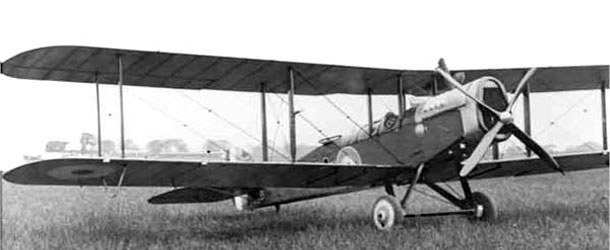
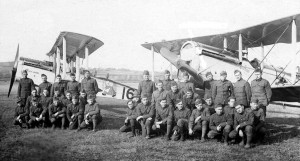
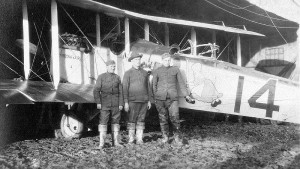
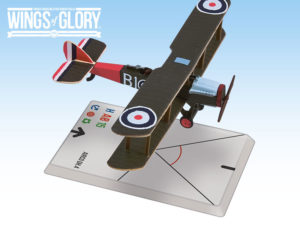
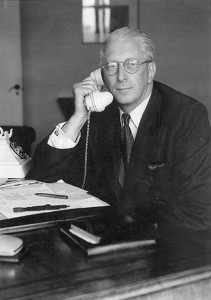




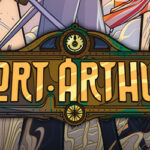


Follow Us on